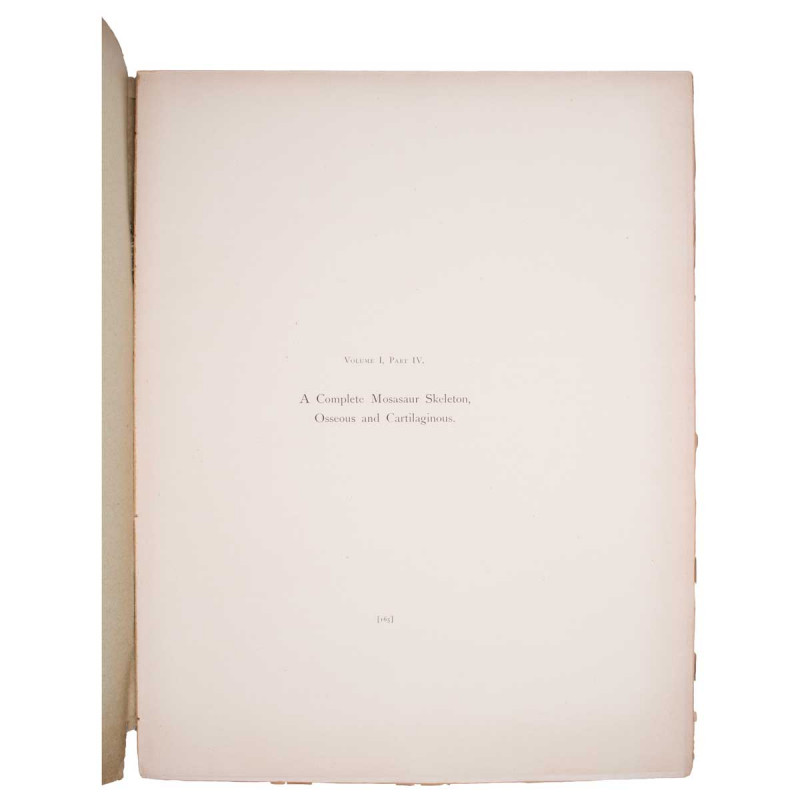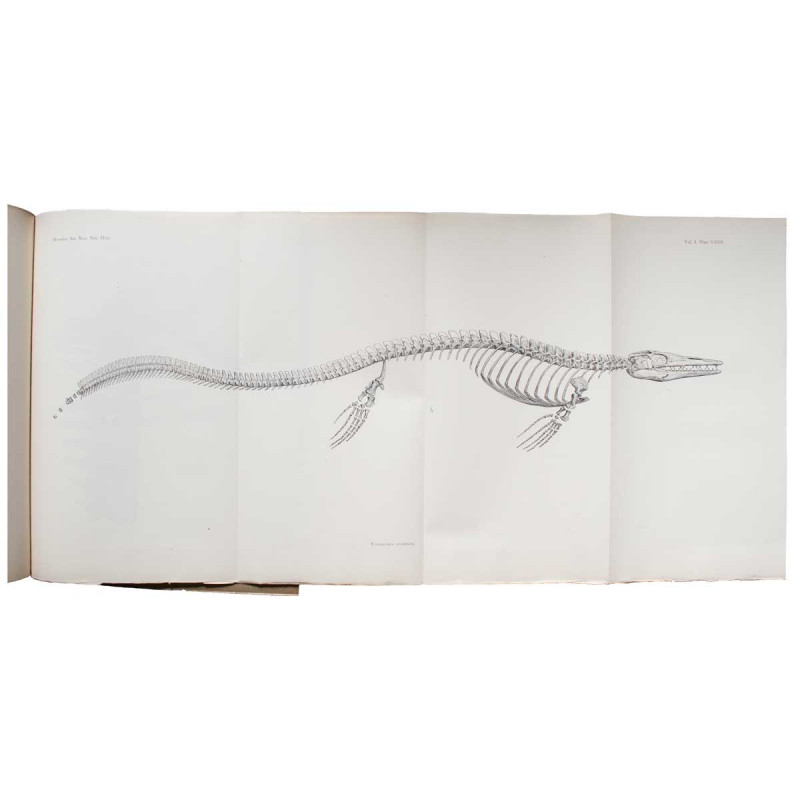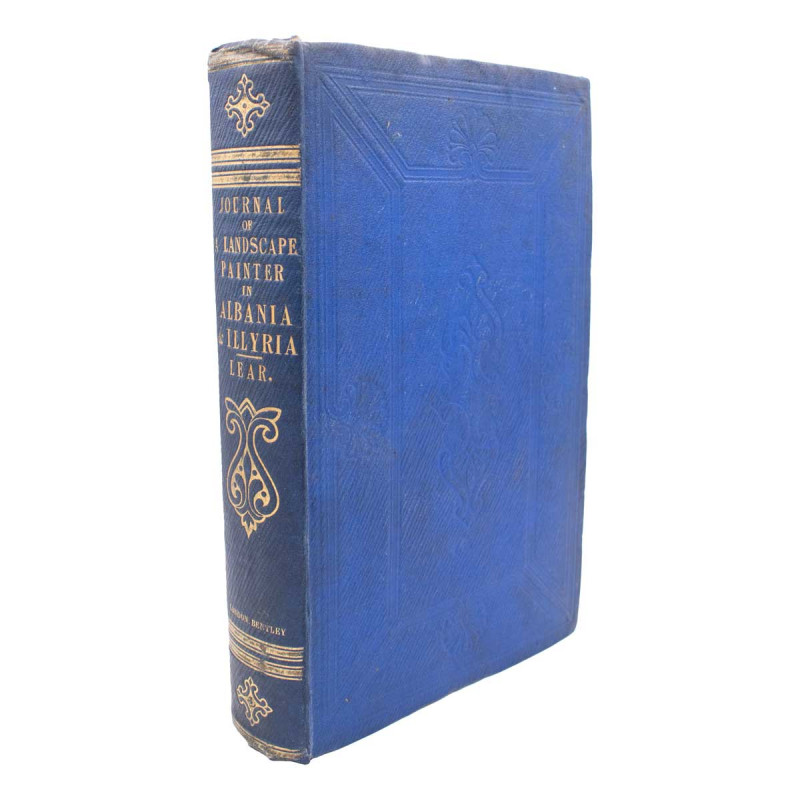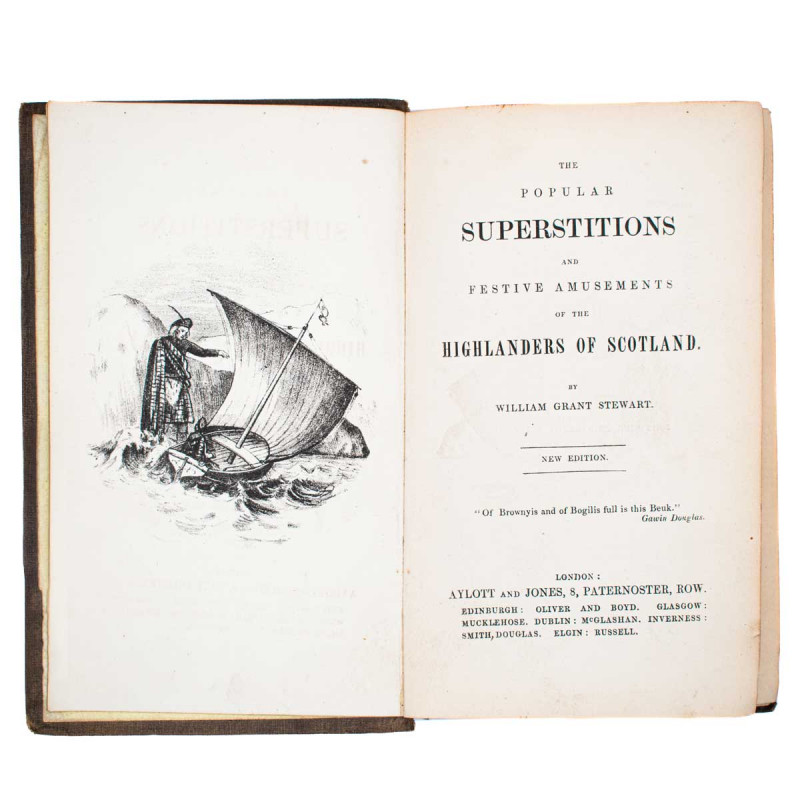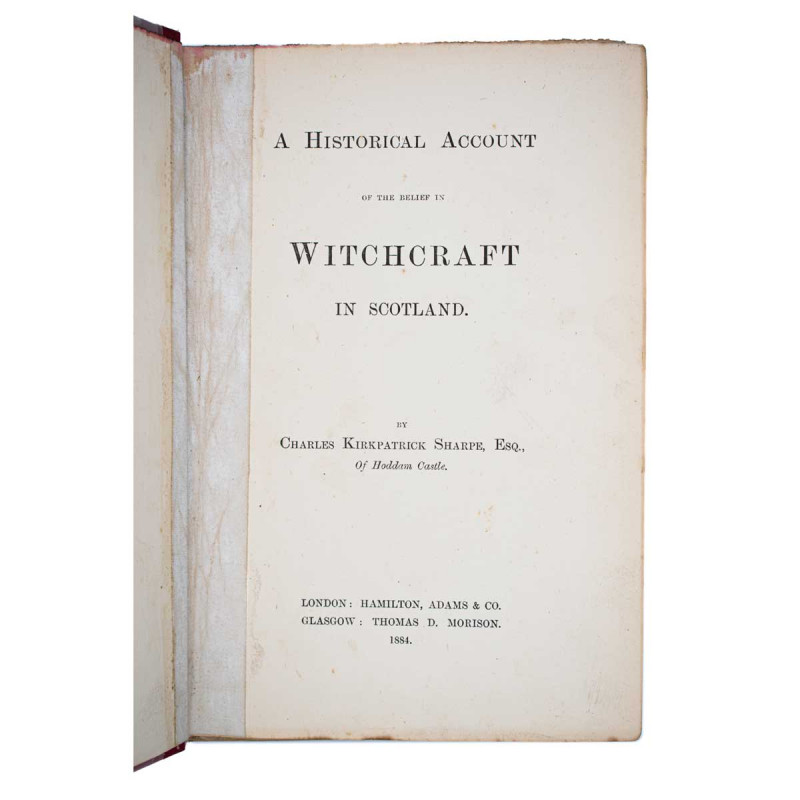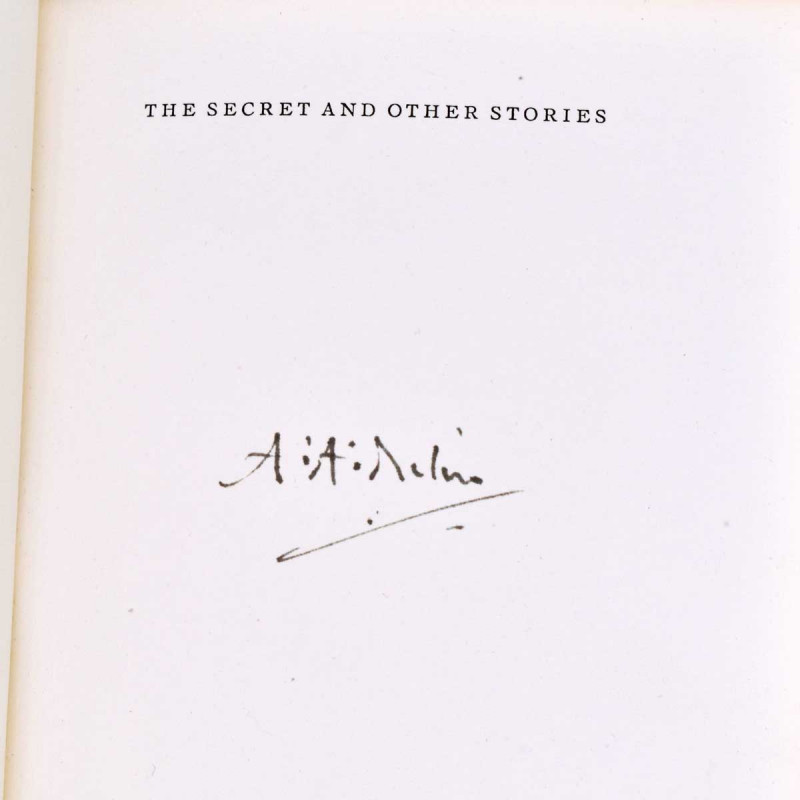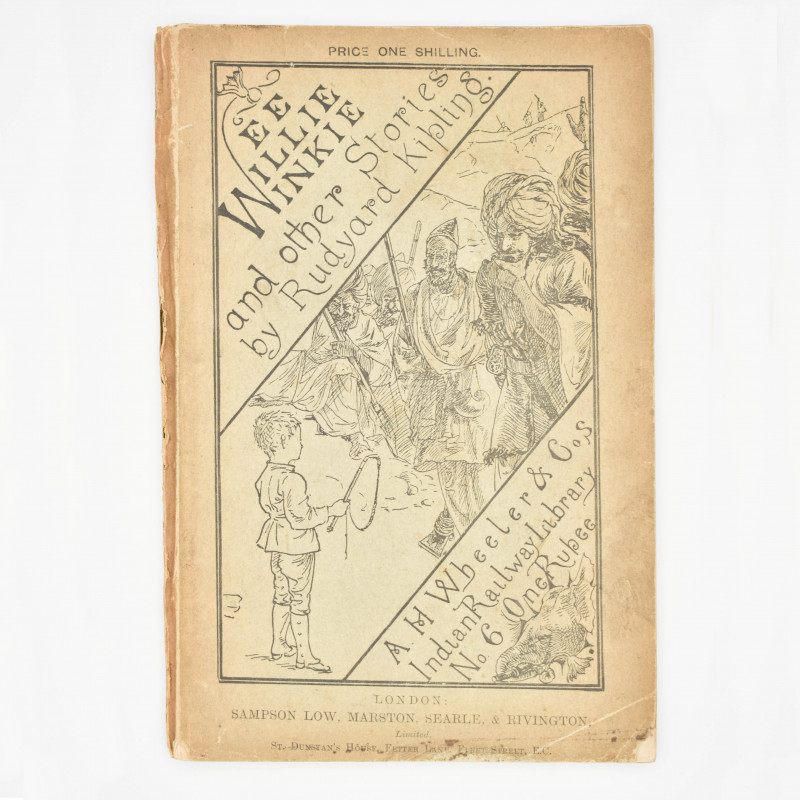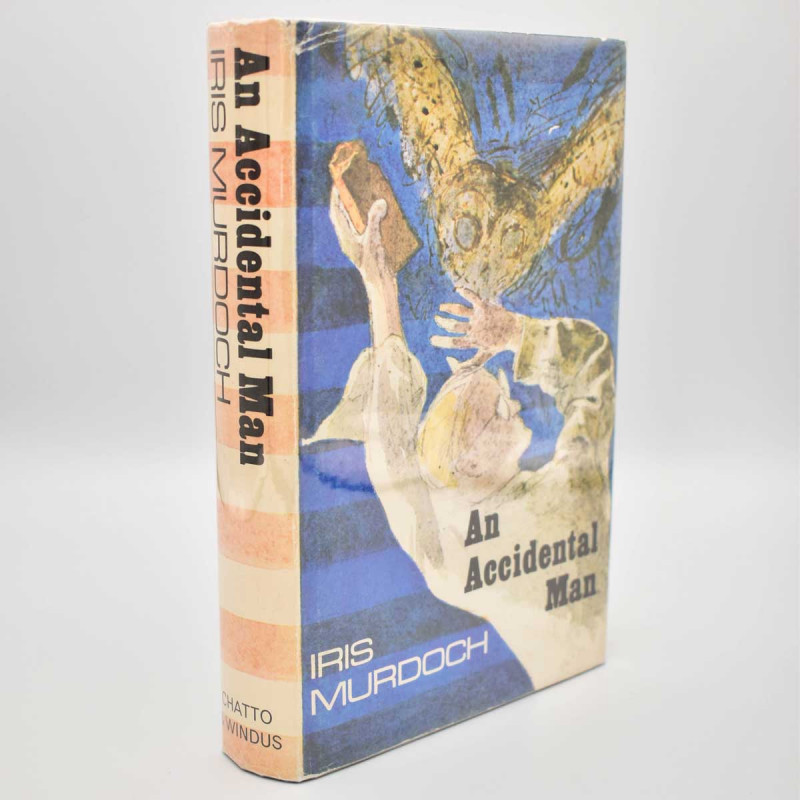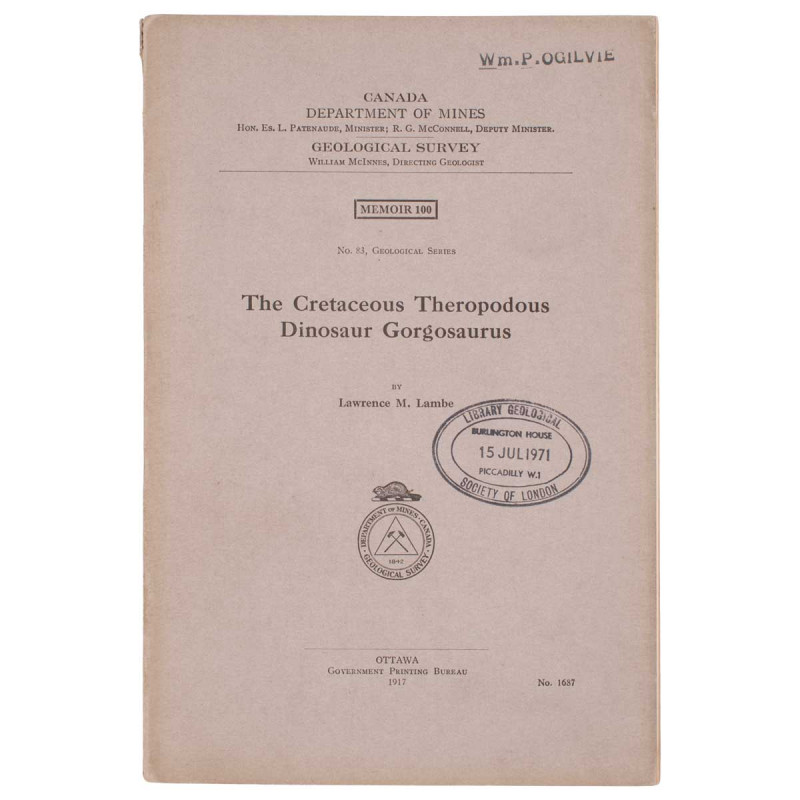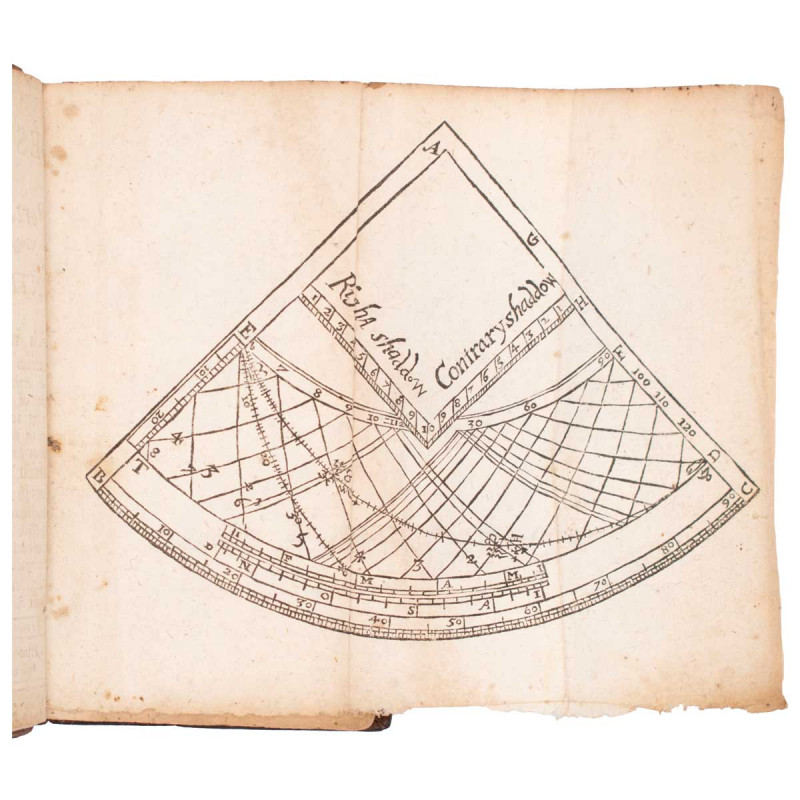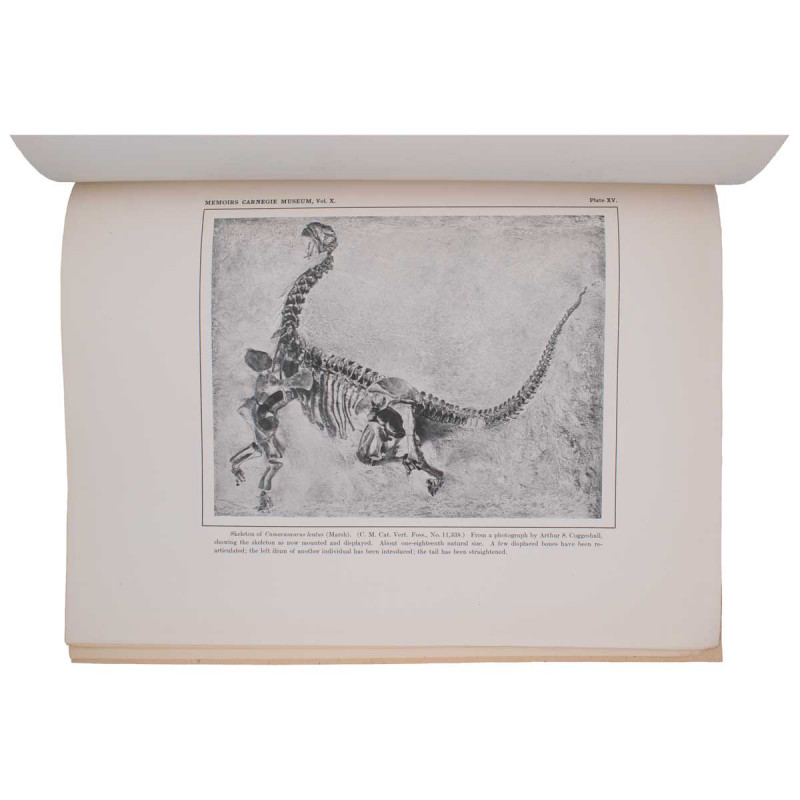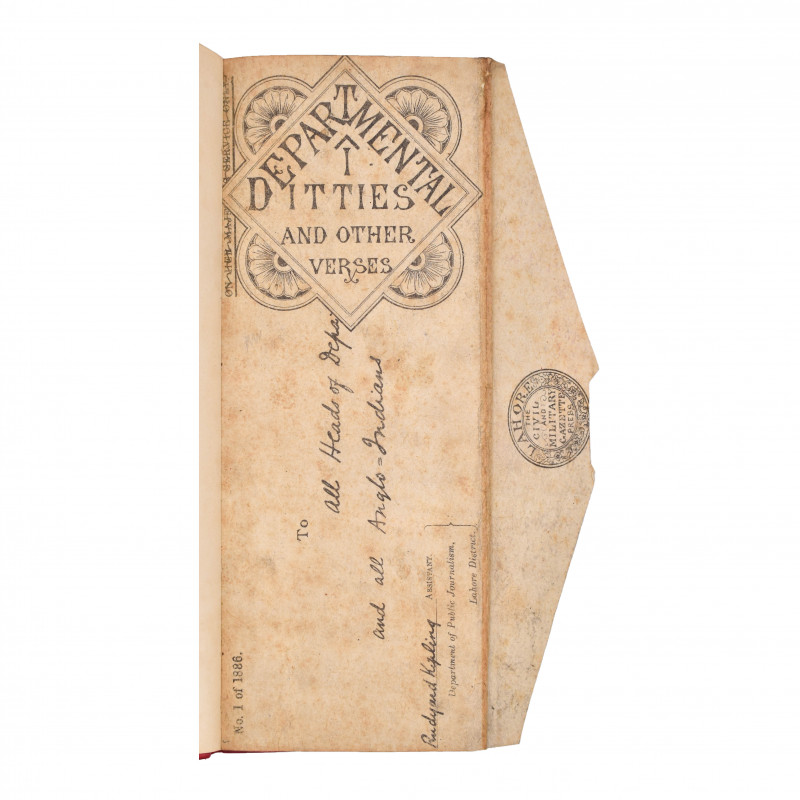Memoirs of the American Museum of Natural History. Volume I, Parts IV and V. Part IV. — A Complete Mosasaur Skeleton, Osseous and Cartilaginous. Part V. — A Skeleton of Diplodocus.
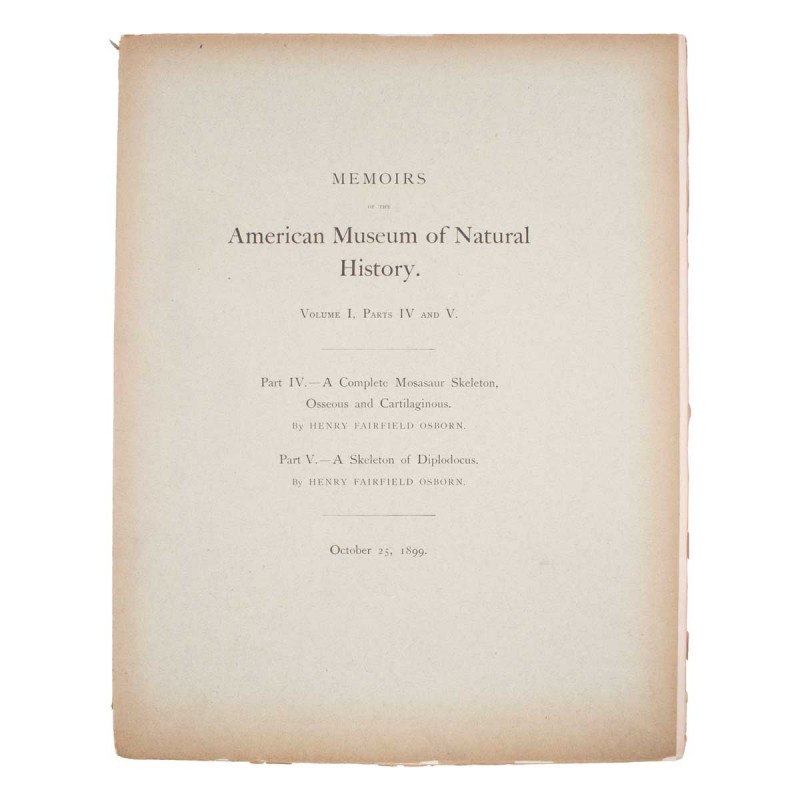
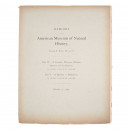
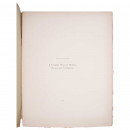
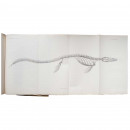
Book Description
FIRST EDITION, First Printing, 7 photographic plates on glossy paper, 1 folding diagram, numerous text illustrations, leaves unopened, original grey wrappers, title printed in black, faint toning to spine and extremities, folio, New York: The Knickerbocker Press for the American Museum of Natural History, 25th October, 1899.
A scarce first edition of Osborn’s proposal that the Diplodocus may be regarded as relatively nimble and able to raise itself up onto its two hind legs with the aid of its long tail.
First discovered in 1877, the Diplodocus, like other sauropods, was believed to be a semi-aquatic creature who resided in swamps. The ones who made it onto land were shown in displays and illustrations as big, slow reptiles.
This work describes a partial Diplodocus skeleton unearthed in Wyoming’s Como Bluffs by Barnum Brown and J. L. Wortman in 1897. Established using this skeleton, Osborn challenged the theory that Diplodocus were “ponderous and sluggish”, writing “This view may apply in a measure to Brontosaurus. In the case of Diplodocus it is certainly unsupported by facts” (p. 213). To him, the posterior half of the tail looked well-suited to supporting the weight of Diplodocus when it reared up on its hind legs. That Diplodocus was capable of such activities was made clear by the relatively lightness of its skeleton compared to other saurapods. “This power was certainly exerted while the animal was in the water, and possibly also while upon land” (p. 213). Modern research has confirmed Osborn’s assumptions, showing that Diplodocus’s musculo-skeletal structure probably allowed it to rear up on its hind legs with relative ease.
Palaeontologist Henry Fairfield Osborn (1857-1935) was president of the American Museum of Natural History for twenty-five years, during which he oversaw significant work on the discovery, description, and naming of new dinosaur species discovered in western North America, most notably Tyrannosaurus rex, Velociraptor, Albertosaurus, and Ornitholestes. As an administrator Osborn put new emphasis on museum displays, making them more visually appealing and accessible, though he also incorporated his profoundly racist and eugenicist views into the ones he designed for the Museum of Natural History.
An excellent copy. An unusually fresh and attractive copy, the contents unopened.
[Linda Hall Library, Paper Dinosaurs 1824-1969]
Author
OSBORN, HENRY FAIRFIELD.
Friends of the PBFA
For £10 get free entry to our fairs, updates from the PBFA and more.
Please email info@pbfa.org for more information
